Last week, Frod Jr. had to get to Cornell University on Saturday morning, where he's taking courses this summer. It turns out this is not a simple task, as there are almost no flights into Ithaca. Things actually got a bit easier when I needed to be in New York City for work earlier in the week. Frod Jr. came up with me, and had a couple days free in the city before we rented a car and drove to Ithaca. That worked out perfectly.
Then Thursday night while we're up there, I get a text from Miami chef Jeremiah Bullfrog, who had just been at Bonnaroo breaking in his new gastroPod, a diner built in a shipping container: "You in NY??" he asks. Sure enough, he is too, and we've both got Friday night free for dinner. I scour OpenTable to see what's available, and – can this be for real? – there's a 9:30 reservation for three open at Atera. A place I've been wanting to go to since it opened, and for which Friday night tables are usually booked weeks ahead. Should we do it, Jeremiah? "Yes yes yes." And this, too, worked out perfectly.
The chef, Matthew Lightner, who had spent time at Noma and Mugaritz, was getting lots of attention for his "modernist" interpretation of Pacific Northwest cuisine at Castagna in Portland when he switched coasts to open Atera in 2012. It's easy to see how he was lured away: Atera is many a chef's dream come true. Hidden behind an unassuming entrance near Tribeca is a snug room with twelve seats around a matte black concrete counter facing into a gleaming open kitchen.[1] One twenty-ish course tasting menu is served to two seatings every night, and Lightner and crew seem to work with absolute freedom.
When Atera first opened a couple years ago, that freedom was reflected in provocative dishes like pig's blood crackers and lichen crisps. From my recent meal there, it seems those confrontational inclinations have been tempered. This is not "comfort food" by any means – the creative impulses that fuel the menu remain readily apparent – but I left feeling more coddled than challenged, in the best possible way.[2]
(You can see all my pictures in this atera flickr set; and though I don't usually toot my own horn, seriously, go look – I don't think I've ever been quite as happy with my own pictures).
A burst of color starts the meal. A tranche of vermilion and white king crab rests in a pool of cool, crimson rhubarb juice, infused with wild ginger and dotted with fresh cream, topped with a few fragrant rose geranium blossoms. The crab is both lush and lean, a balance echoed by the thick cream floating on the surface of the tangy rhubarb.
An even more colorful bouquet followed. For a while, everyone was throwing edible flowers onto their dishes in imitation of Noma's "forager cuisine." Too often, it was this generation's equivalent of the parsley sprig – a garnish, arguably edible, but having no real relationship to the dish other than to look pretty. Here, the flowers are the heart of the dish: a ruby-hued broth of rose hips and petals, poured tableside into a bowl with slices of black bass and a spray of various blossoms.[3] The broth was intensely floral, but the acidity of the rose hips (a common source of Vitamin C) tempered the suggestion that you were digging into a bowl of potpourri. A very light charcoal-grilled sear on the fish – so clean and fresh – helped keep it from getting lost.
Then, a sort of "nose to tail" triptych of trout. First, trout liver, packaged into a sort of sandwich with apple, toast and powdered brown butter. Next, slabs of the trout filet – cured, smoked, and brushed with pork fat, presented entirely unadorned – a perfect bite. Finally, smoked trout roe, with a clean brininess that pops in your mouth, sandwiched between crisp, lacy amaranth crackers, bound with a bit of tartar sauce.
(continued ...)
A few different breads are served at intervals throughout the meal, starting with this dark salted rye bread, followed later by a crusty roll brushed with pork fat, and then a slice of sourdough brightened with fennel seed. The breads were good. The butter, cultured in-house after being infused with a washed-rind cheese, was fantastic – rich, creamy, cheesy, even funky.
So I was a bit disappointed that dish wasn't in our lineup, though we did get a variation on the theme. Here, slivers of surf clam, white asparagus, and tender young almond were mounted on each other, dotted with tiny white elderflowers, and bound with a limpid almond milk. These flavors – as was true of nearly every course – were so clean and pure.
Sea urchin, for me, is one of nature's perfect foods. It needs no adornment, and is rarely enhanced and often undermined by attempts to pair it with something else. This was one of those dishes that is an exception to my rule. Here, the uni was accompanied by a couple pieces of carrot that had been roasted to the point of nearly collapsing in on themselves, yielding a creamy texture that matched the sea urchin. These were napped tableside with a lush, velvety sauce which I'm guessing is composed of carrot, lobster and herbsaint.[5] This was something like an echo chamber: the colors all coordinated, the supple textures mimicking each other, the flavors – oceanic, sweet, floral – reinforcing everything I like about uni.
One of El Bulli's most imitated ideas is to start a meal with a procession of "snacks," typically designed to be eaten with one's hands. Our dinner at Atera offered a welcome variation: instead of just a whirlwind procession of small items to start, throughout the meal more substantial courses would sometimes alternate with little one-bite wonders.
A silky dumpling of minced chicken and shrimp bobbed in an almost impossibly rich chicken velouté; a squeeze of bright, fresh lemon cut through that richness, bringing to mind the classic Greek avgolemono soup. This was then followed by a delicate bite of geoduck and whipped potato packed into a crisp "air baguette," topped with a sheath of translucent lardo.
Our server called this "Scallop Times Three" – the plump, fresh muscle of the scallop sitting atop a disk of scallop mousse, then bathed in a scallop "bouillon" darkened with toasted potato. Next, another sensational bite: a "lobster roll" with a yeast meringue "bun," the lobster filling creamy and intense, the bun light as air with a subtle sweetness that enhanced rather than overwhelmed the crustacean flavor. We could have eaten a dozen of these.
The next course was another potential candidate for the dish of the night. It's not much to look at – a mound of rice – but it was spectacular. The fermented rice had a nearly porridge-like consistency, and was fully suffused with the intense oceanic flavor of abalone, spot prawns and king crab. It was intense and rich but not heavy, just a beautiful dish. A sidecar of plump slices of abalone topped with various seaweeds reiterated the theme.
One of the few dishes that didn't register much of an impression was this oyster, served over rice grits and rice milk, with a scatter of various tiny greens and sea vegetables. There was nothing wrong with it, but it lacked the same high notes as most of the rest of the dinner.
The silky texture of this Maine halibut, and the glossy emulsion perfumed with chamomile that accompanied it, made me think of bacalao al pil pil, the classic Basque dish in which codfish is served in an emulsion of the fish's juices, olive oil and garlic. On the opposite side of the plate, variations of black walnut – a few broken pieces, as well as dots of black walnut butter and a fermented black walnut miso – struck me as almost too intense and domineering in flavor for the delicacy of the other components. Crisp, chicharron-like chips of the fish's skin, dusted with seaweed powder, were served alongside.
One last snack: a "hushpuppy" filled with smoked egg yolk and dusted with a sweet pepper powder. This simultaneously brought to mind a fluffy, sugar dusted beignet and a Chinese custard bun, but in savory form. This was followed by an elegantly simple duck dish. A slice each of breast and thigh, the flesh rosy and sanguine, the fat waxy and golden, their flavors concentrated and intense from aging; a tangle of delicate market greens; and a vibrant green tea emulsion, with a complex bitterness that offset the rich meat. It's interesting to note that except for a bit of pork fat here and there, this feathered creature was as high up the evolutionary chain as the meal went.
My favorite dessert was the middle round, which offered some Mugaritz-style sleight of hand. Described as "almond, white chocolate, olive oil," what appeared to be almonds were in fact made of white chocolate infused with almond flavor. But what was even more masterful was that they had been chilled to just the right point so that the snap of the chocolate perfectly duplicated the feel of a nut.
A neon pink rhubarb sorbet looped back to the flavor of the broth in the first course of the meal. A precise squiggle of licorice caramel, and the sort of gummy-textured rhubarb-infused rubble the sorbet was nestled in, made me think of a Good & Plenty. A final dessert combined a puffy marshmallow spiked with shards of crisp browned wafers, tangy goat's milk yogurt and a pool of limpid brown butter.
A generous procession of mignardises concluded the meal. Trompe l'oeil black walnut truffles, nestled in a moss-covered box. Mezcal flavored macarons, topped with flaky salt crystals. Caramel and chocolate balls, looking and tasting for all the world like Milk Duds. Green pea[6] financiers, topped with a disc of white chocolate. Bonbons stenciled with their curious contents: bright strawberry, tart sorrel, and puckery, salty preserved cherry blossom.[7]
Sometimes it seems like there are more references in Lightner's cooking than a Girl Talk track: through the course of the meal I was reminded, most obviously, of the trompe l'oeil effects so beloved by Andoni Aduriz and crew at Mugaritz and of the austere "New Naturalism" pioneered by Rene Redzipe at Noma; but also of the Adrias' meringue "bread" served at El Bulli; of the little side plates that often accompany courses at Arzak; of Blaine Wetzel's simple, perfect alderwood smoked salmon at Willows Inn; of classic Basque and Greek dishes, even of lowbrow movie snacks. But those "samples" are not merely replayed; rather they become woven into something greater than their individual parts.
This is some truly thoughtful cooking. There is clearly a lot of technique and manipulation applied to the ingredients, but the end result feels entirely natural. Lightner and crew[8] have a knack for extracting incredibly focused, clean flavors from every component of their dishes, and putting them together in ways that just make sense.
It turns out Lightner may be something of a believer in serendipity himself. When asked in an interview[9] about the process of creating a new dish, he said:
Sometimes if I want to come up with a dish and it just happens to be the day that nothing’s going right, it’s not going to go right. But now, if I come up with a dish when everything’s going right, it seems to go right . .. it’s funny, because it’s almost like destiny, as if sometimes a dish was meant to kind of happen, as if it were somewhere hidden in the back of my head or hidden in the back of my notebooks of old experiences that I can bring into the new and into my style.Whatever it is: it's working.
atera
77 Worth Street, New York NY
212.226.1444
[1] A live edge wood table that seats another six or so stretches along one side of the room as well.
[2] Service and atmosphere play a big role as well. Frod Jr. noted what an odd mix it is, that somehow all pulls together: the dining room, by Parts and Labour Design, is an elegant and sleek example of modern urban style, but still has some of the homey feel of eating in someone's open kitchen. There are all sorts of smart bespoke details, like the slotted wooden racks that are used to hold each diner's silverware before courses. Front of house staff are all donned in sharply tailored suits, but the soundtrack is mostly classic FM radio of the 70's and 80's (when was the last time you heard Boston's "More Than a Feeling"? In a Michelin two-star dining room?). Captain Matthew Abbick (a fellow food blogger, it turns out!) and the whole crew did a masterful job of keeping the pace and rhythm of the meal right. A nice bonus treat came by way of the gentleman seated next to us, who generously shared a couple sips of some outstanding wines: a really stunning white Burgundy whose label I missed, and a Jacky Truchot Charmes-Chambertin that was pretty darn sexy too.
[3] Most of the flowers and herbs are grown hydroponically in a basement below the restaurant. There's also a dark, cozy bar down there (reservations recommended), a roomy, incredibly well-equipped production kitchen, and a gorgeous workroom that also doubles as a private dining room.
[4] Hat tip to Spanish Hipster for noting the similarities to an Andy Goldworthy sculpture.
[5] Our server clued us in on this last component after we stumbled around for a while, guessing "tarragon" and "fennel" – at least we were on the right track in the anise-flavored family. Generally, the staff were great about providing just enough information to effectively present each dish, while being able to fill in just about the minutest details on request. He also gave some great background on the Miyasaka Yamahai 50 Nama "Last Ride Home" sake we ordered in lieu of the pairing option, an unpasteurized, naturally fermented sake that was simultaneously clean and complex.
[6] Just like Rosebud Frozen Peas (sorry, I can't help myself).
[7] This last one provoked a wince on Jeremiah's face worthy of Pynchon's "Disgusting English Candy Drill".
[8] Lightner was not in the house during our service, so the kudos for our particular meal actually should be going to his chef de cuisine, Jaime Young.
[9] Hat tip to Andrew Friedman's Toqueland.
[2] Service and atmosphere play a big role as well. Frod Jr. noted what an odd mix it is, that somehow all pulls together: the dining room, by Parts and Labour Design, is an elegant and sleek example of modern urban style, but still has some of the homey feel of eating in someone's open kitchen. There are all sorts of smart bespoke details, like the slotted wooden racks that are used to hold each diner's silverware before courses. Front of house staff are all donned in sharply tailored suits, but the soundtrack is mostly classic FM radio of the 70's and 80's (when was the last time you heard Boston's "More Than a Feeling"? In a Michelin two-star dining room?). Captain Matthew Abbick (a fellow food blogger, it turns out!) and the whole crew did a masterful job of keeping the pace and rhythm of the meal right. A nice bonus treat came by way of the gentleman seated next to us, who generously shared a couple sips of some outstanding wines: a really stunning white Burgundy whose label I missed, and a Jacky Truchot Charmes-Chambertin that was pretty darn sexy too.
[3] Most of the flowers and herbs are grown hydroponically in a basement below the restaurant. There's also a dark, cozy bar down there (reservations recommended), a roomy, incredibly well-equipped production kitchen, and a gorgeous workroom that also doubles as a private dining room.
[4] Hat tip to Spanish Hipster for noting the similarities to an Andy Goldworthy sculpture.
[5] Our server clued us in on this last component after we stumbled around for a while, guessing "tarragon" and "fennel" – at least we were on the right track in the anise-flavored family. Generally, the staff were great about providing just enough information to effectively present each dish, while being able to fill in just about the minutest details on request. He also gave some great background on the Miyasaka Yamahai 50 Nama "Last Ride Home" sake we ordered in lieu of the pairing option, an unpasteurized, naturally fermented sake that was simultaneously clean and complex.
[6] Just like Rosebud Frozen Peas (sorry, I can't help myself).
[7] This last one provoked a wince on Jeremiah's face worthy of Pynchon's "Disgusting English Candy Drill".
[8] Lightner was not in the house during our service, so the kudos for our particular meal actually should be going to his chef de cuisine, Jaime Young.
[9] Hat tip to Andrew Friedman's Toqueland.

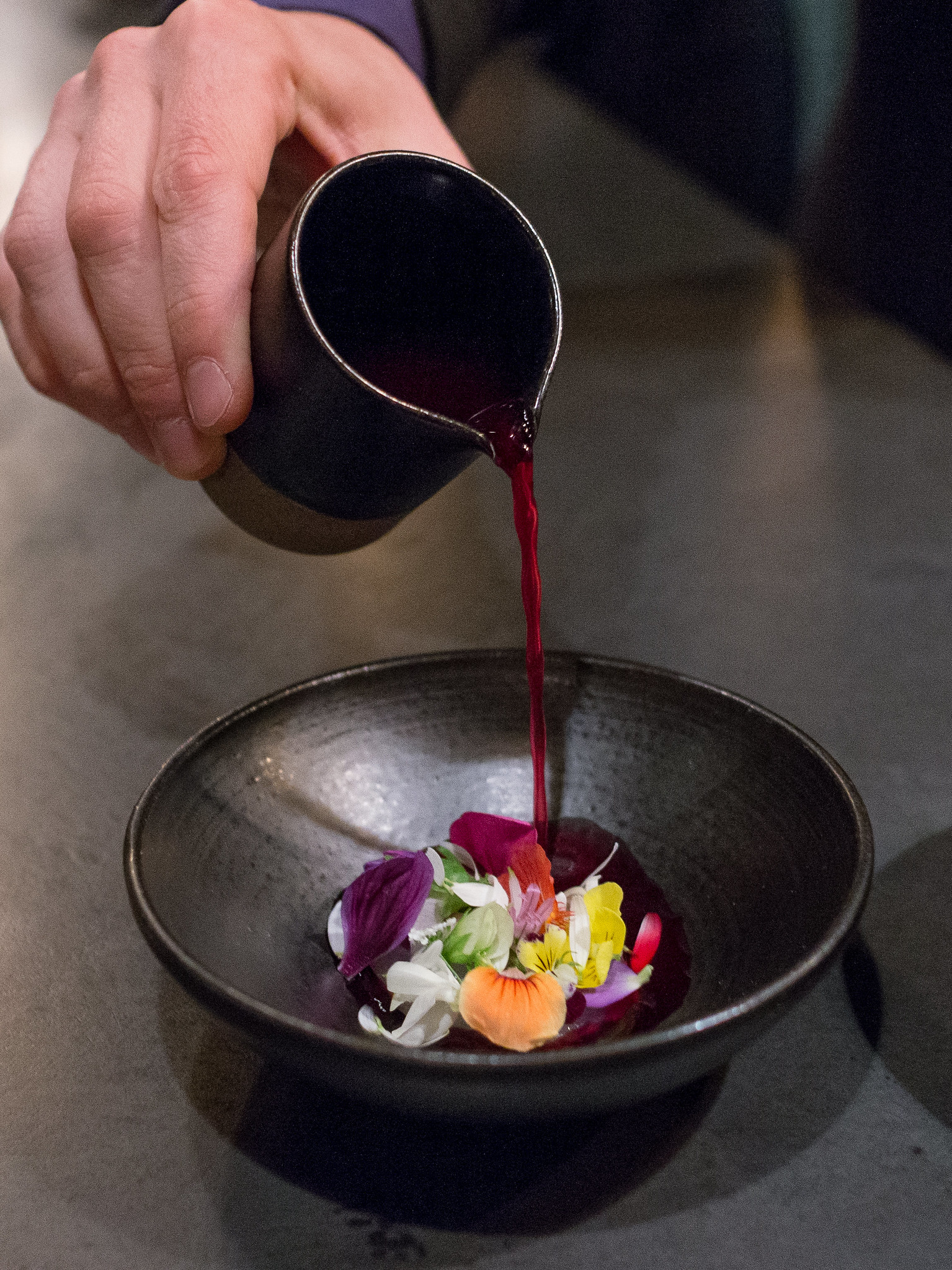
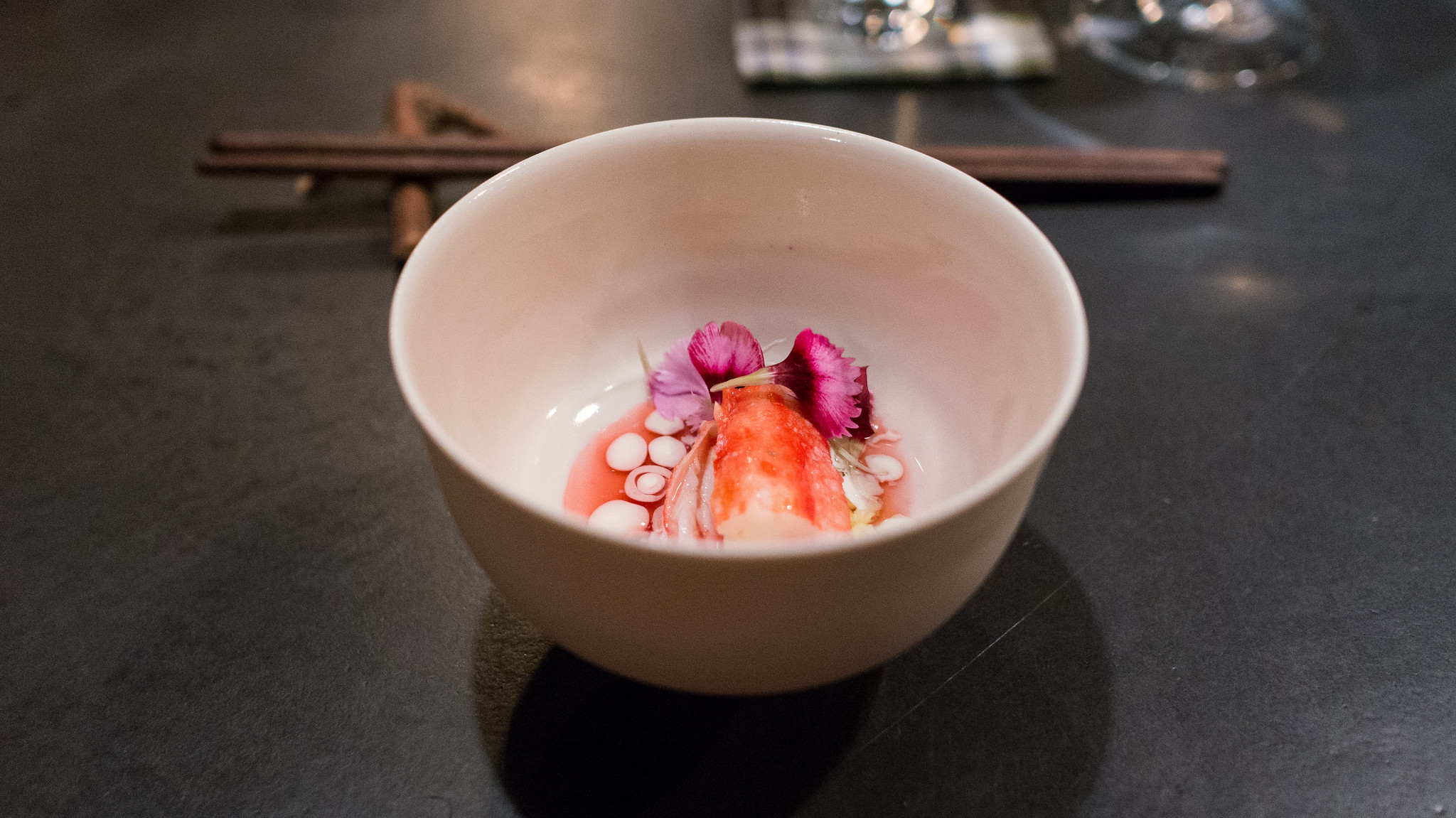
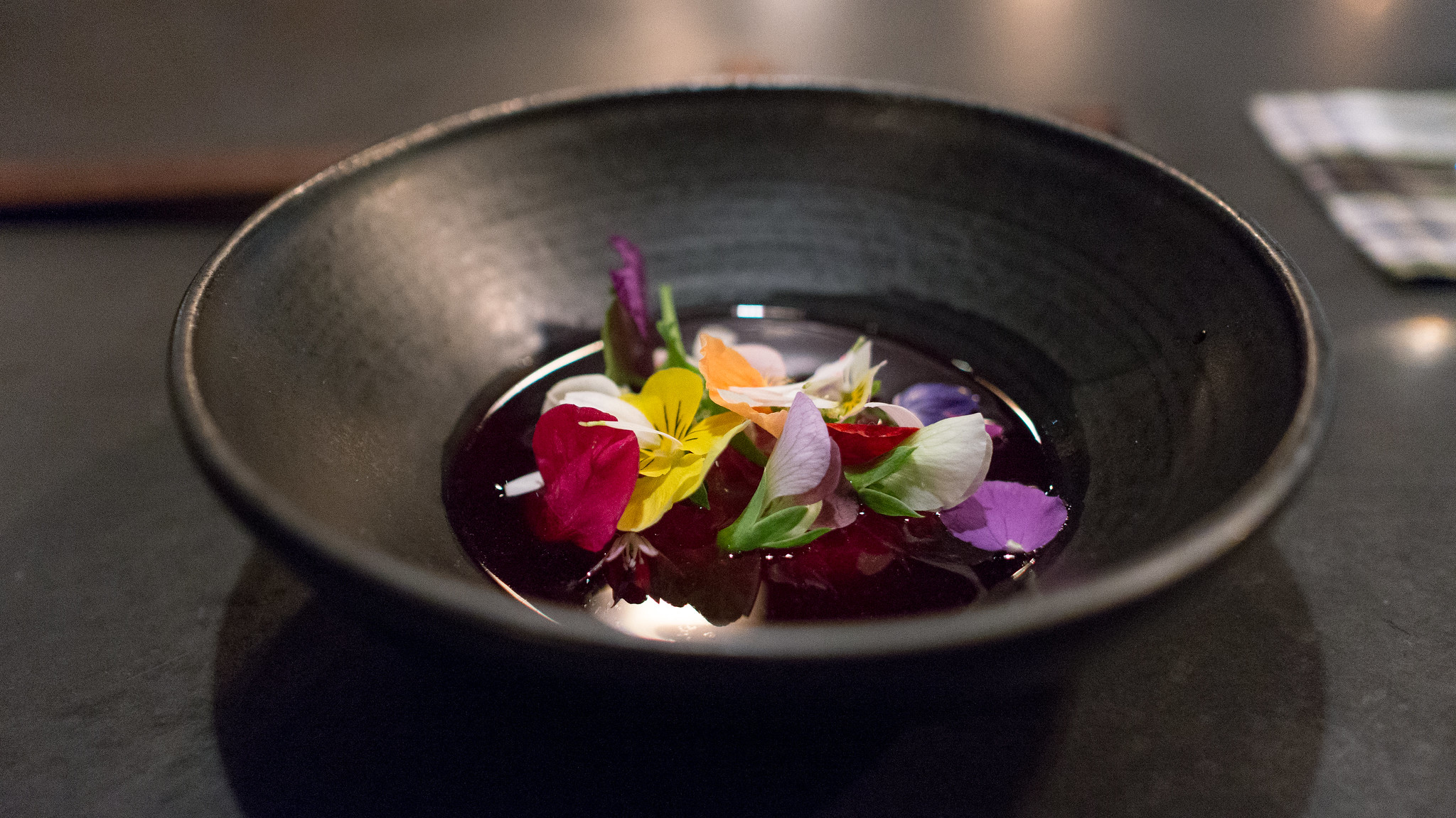

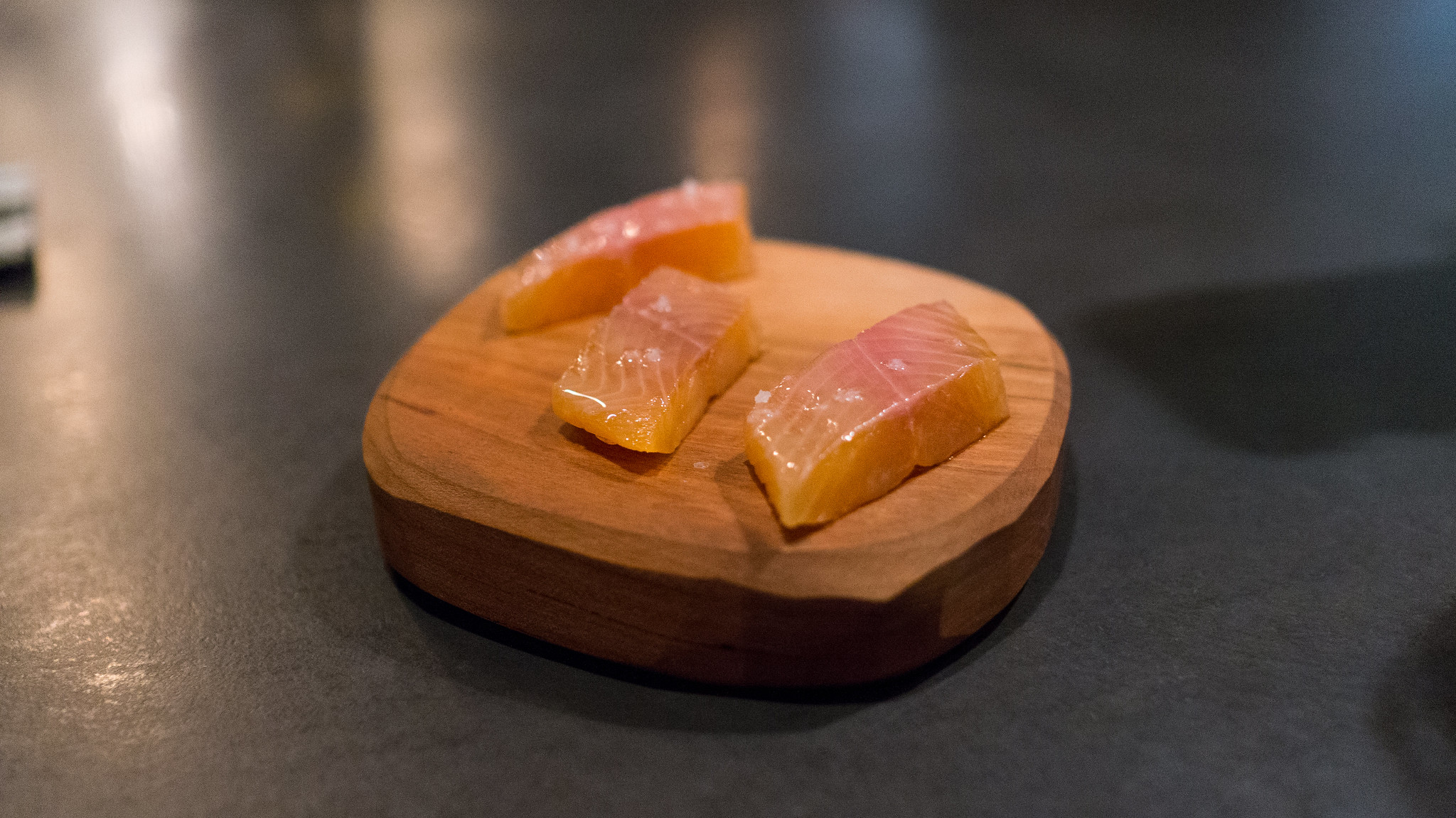
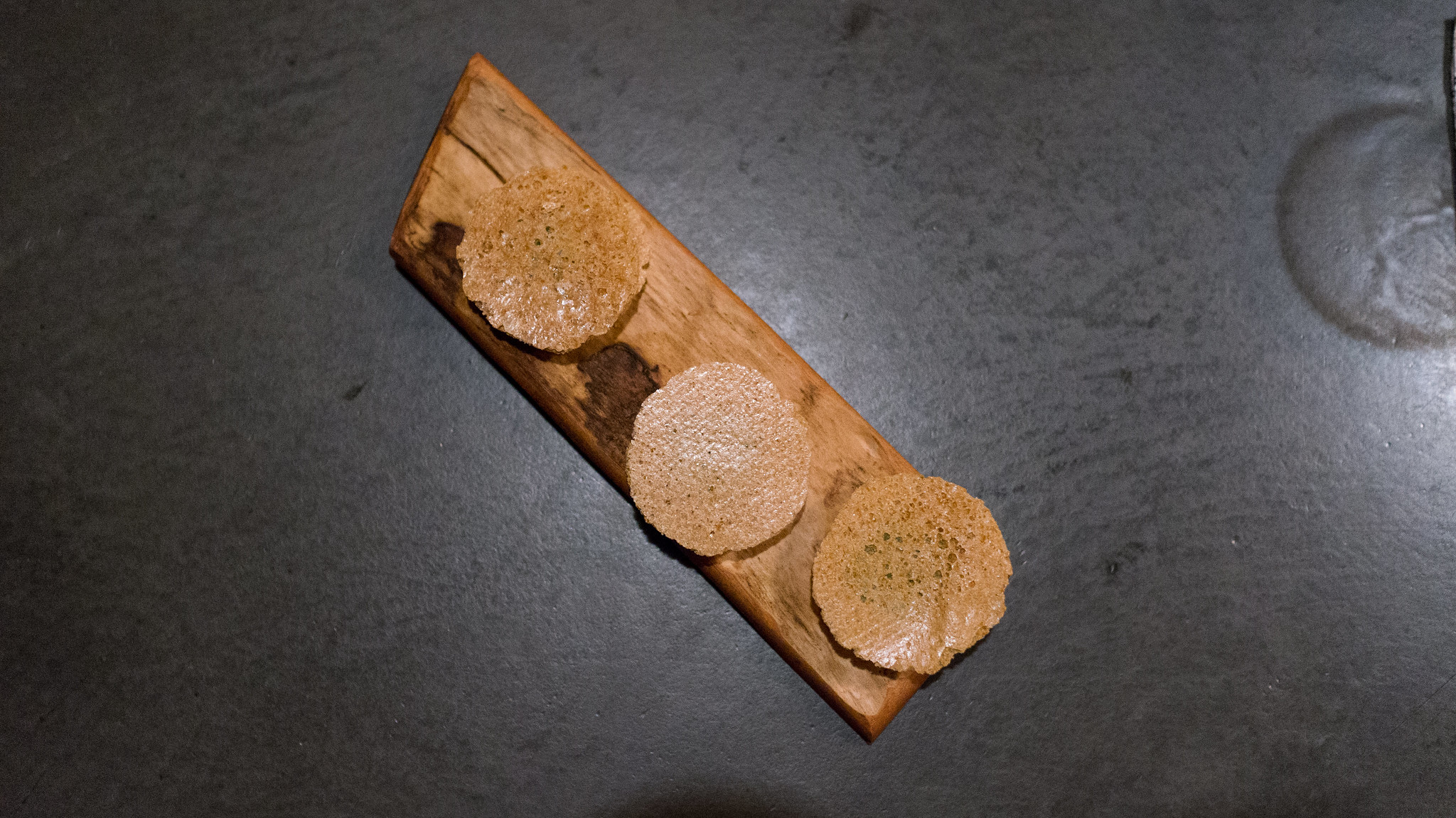
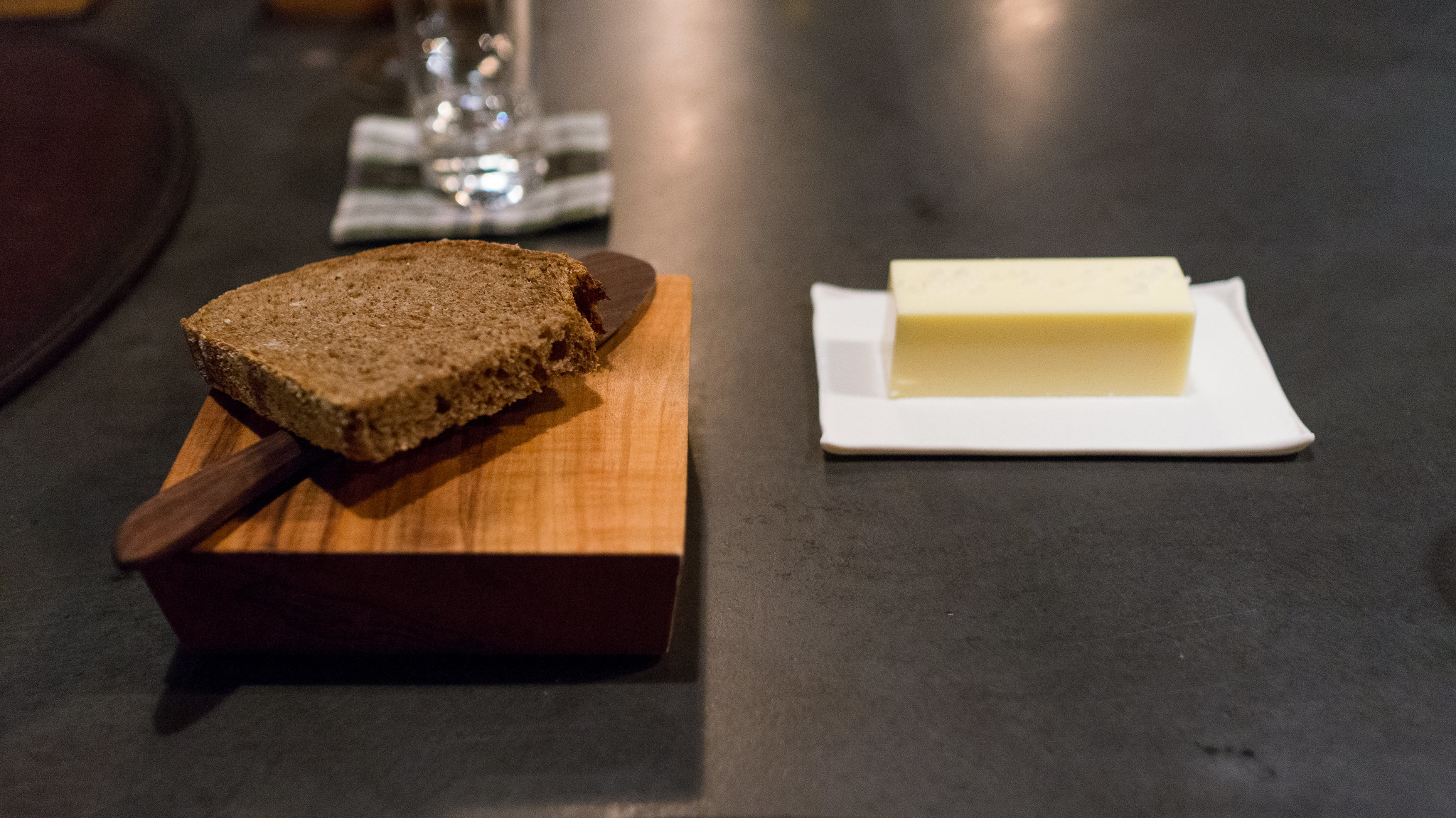




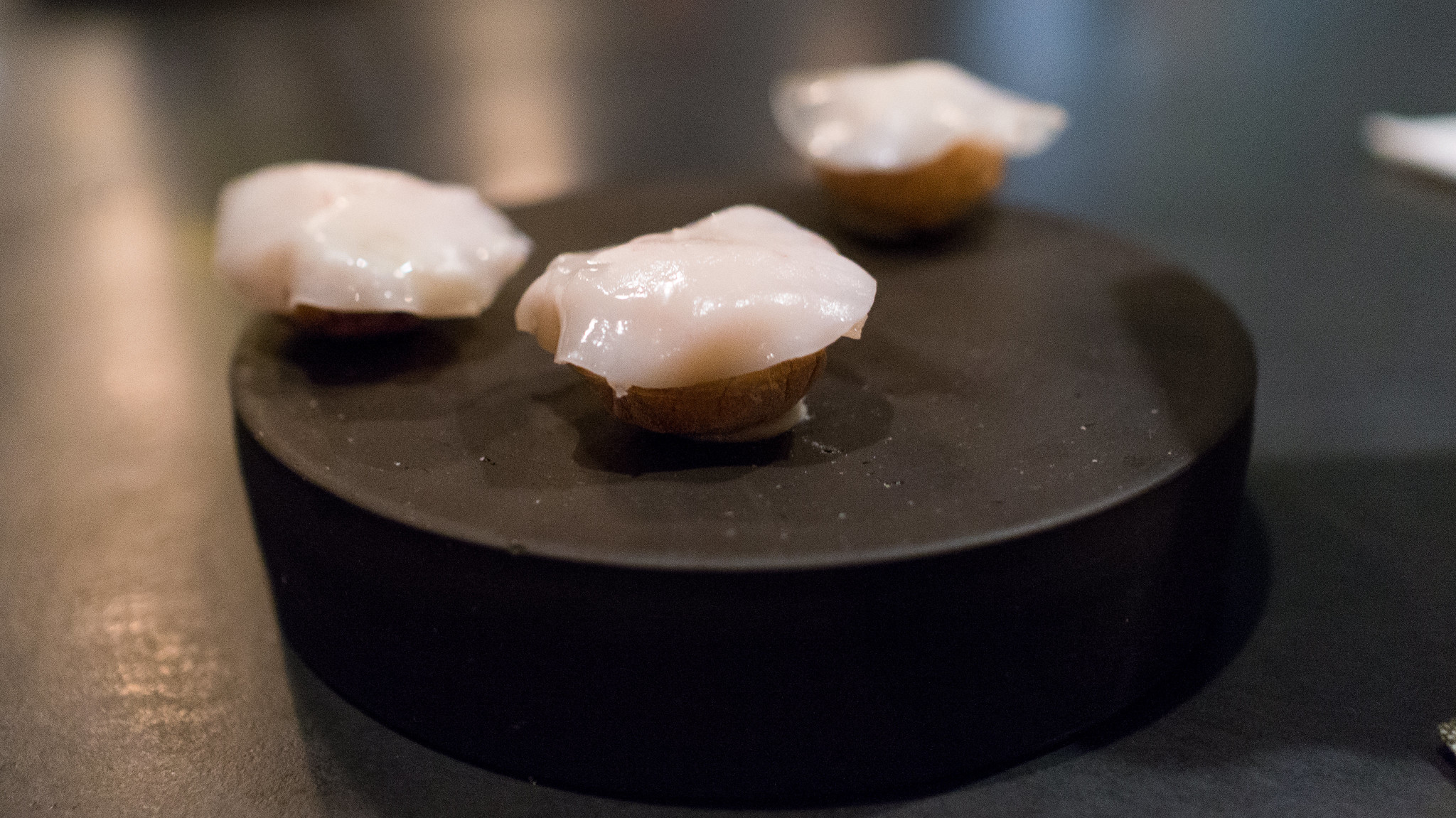
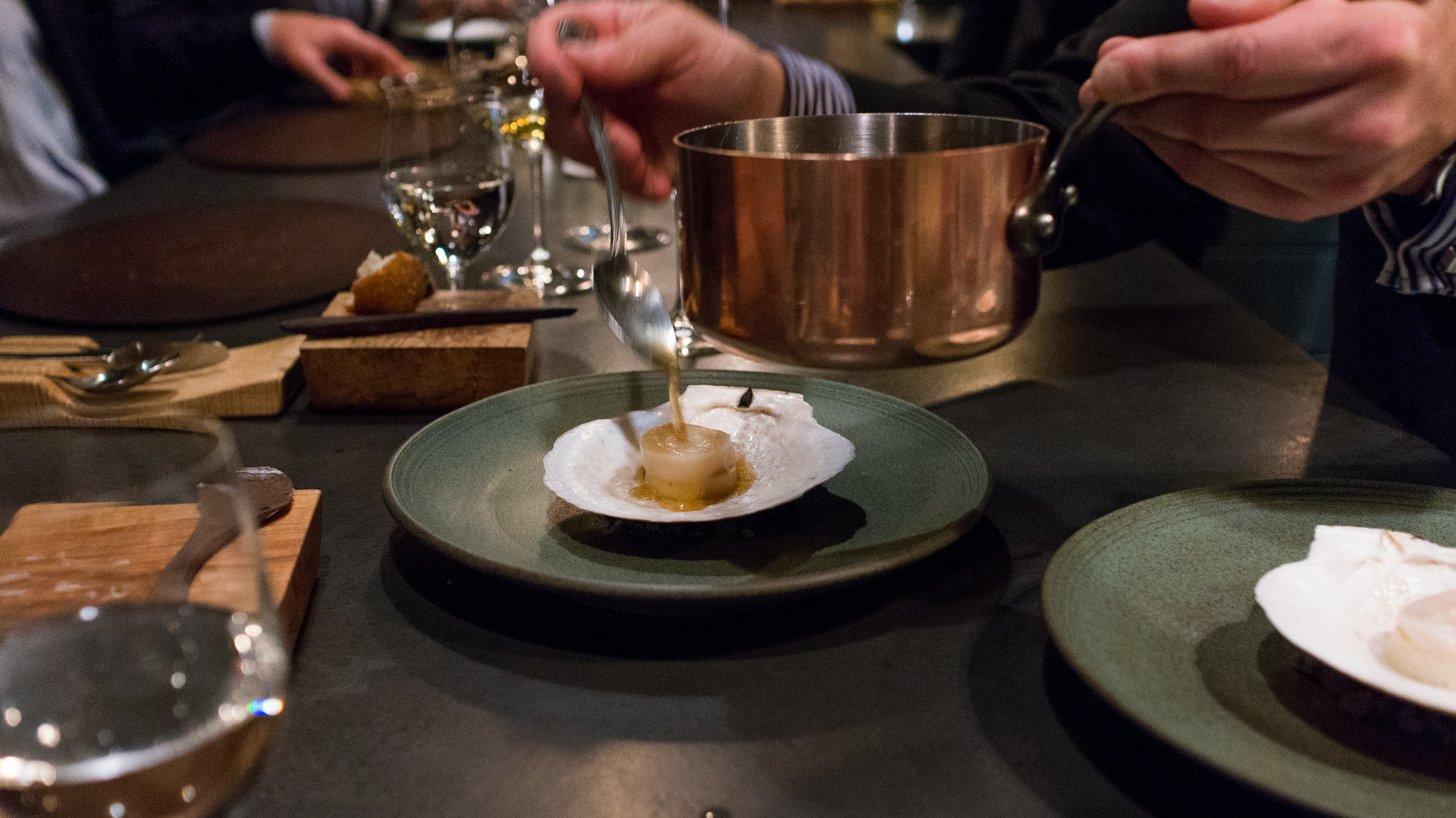

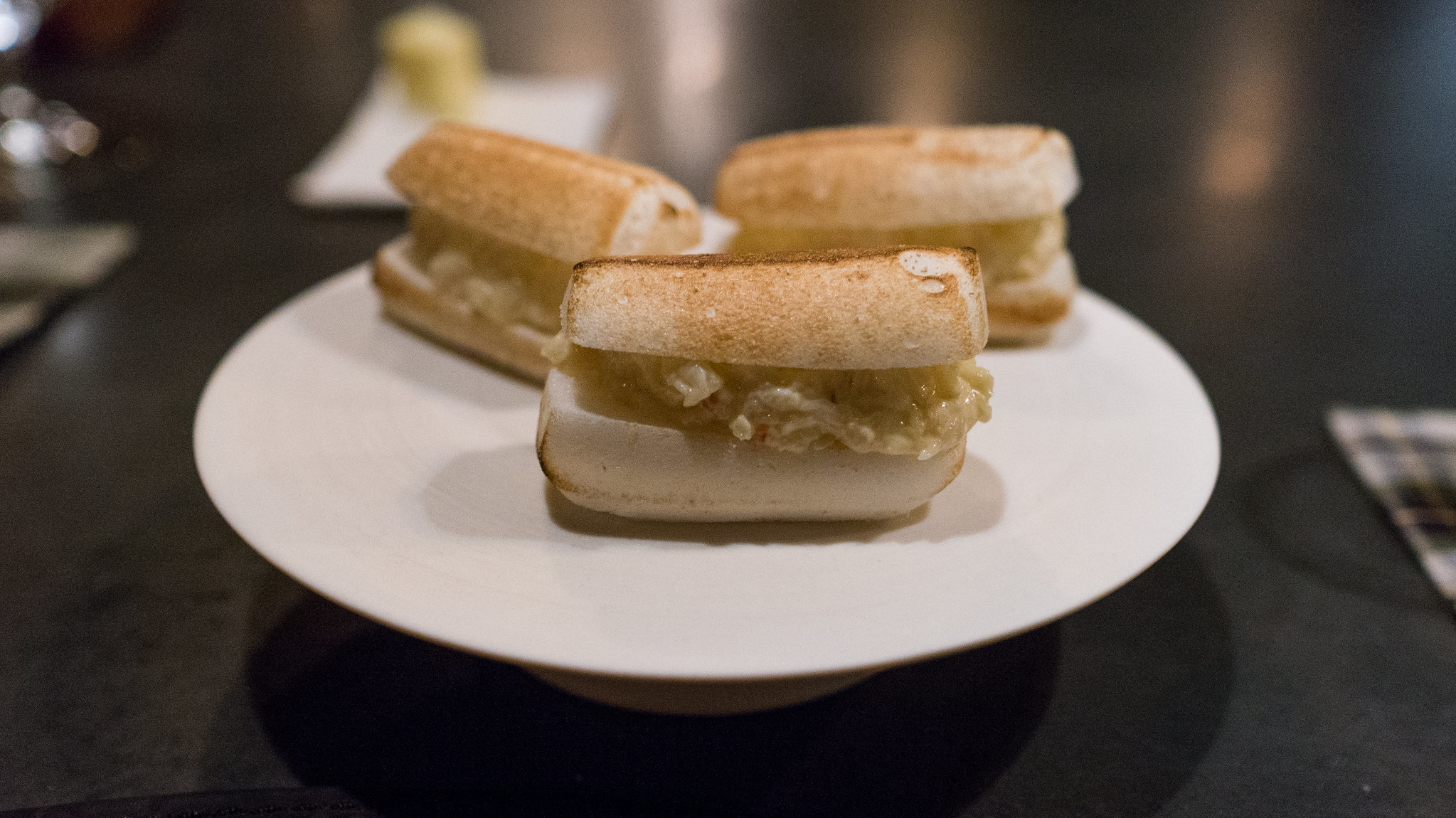

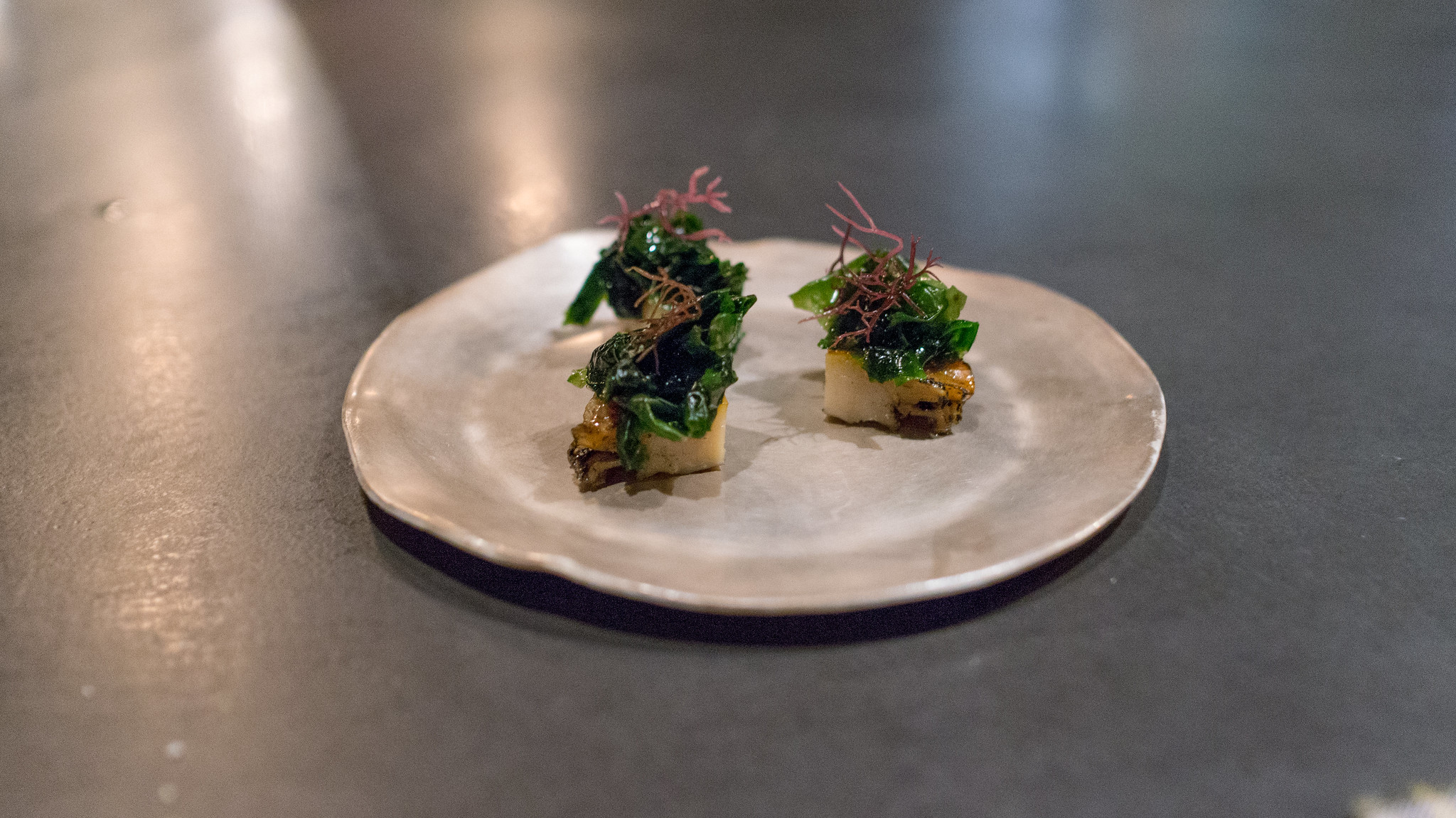




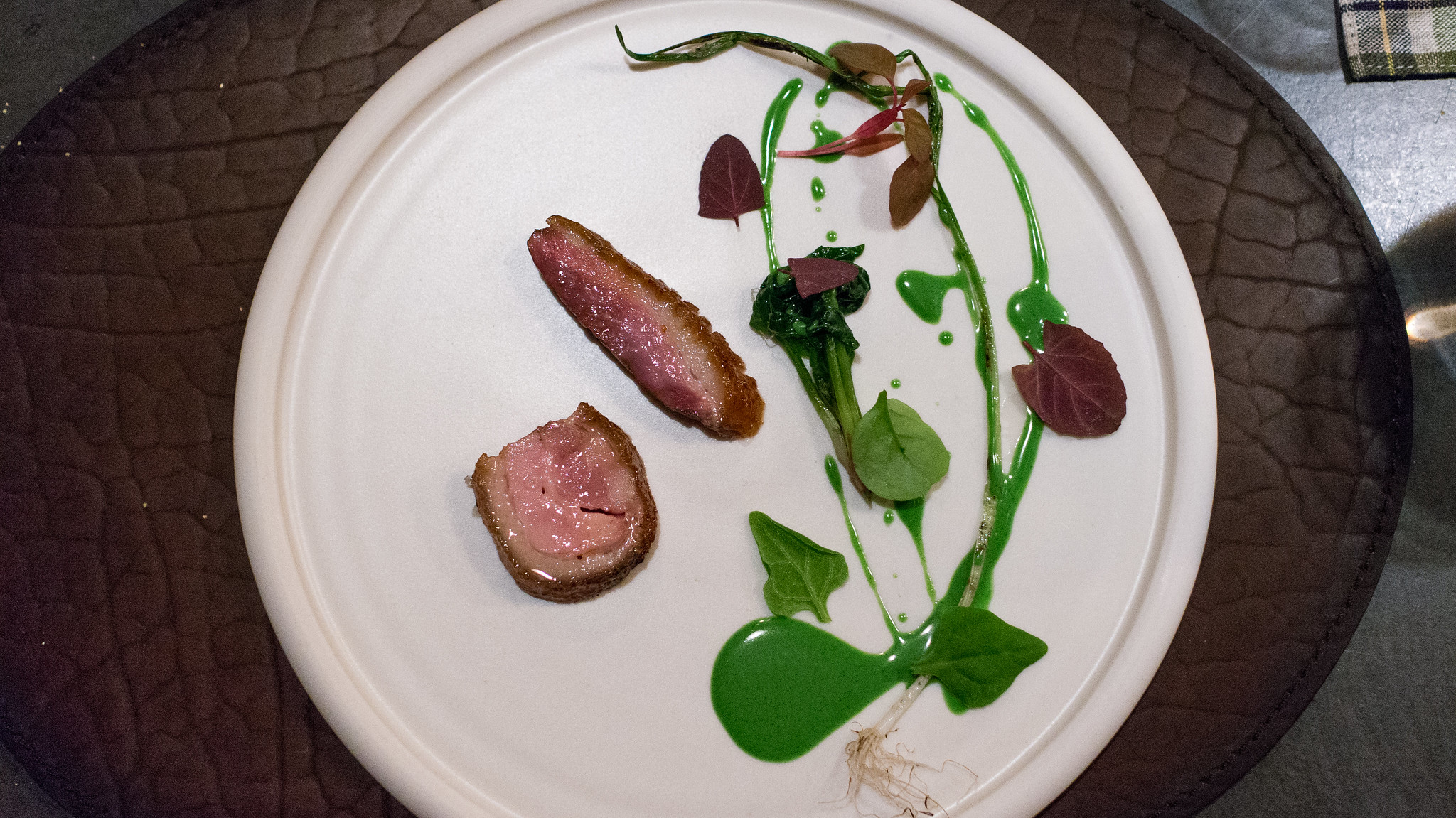
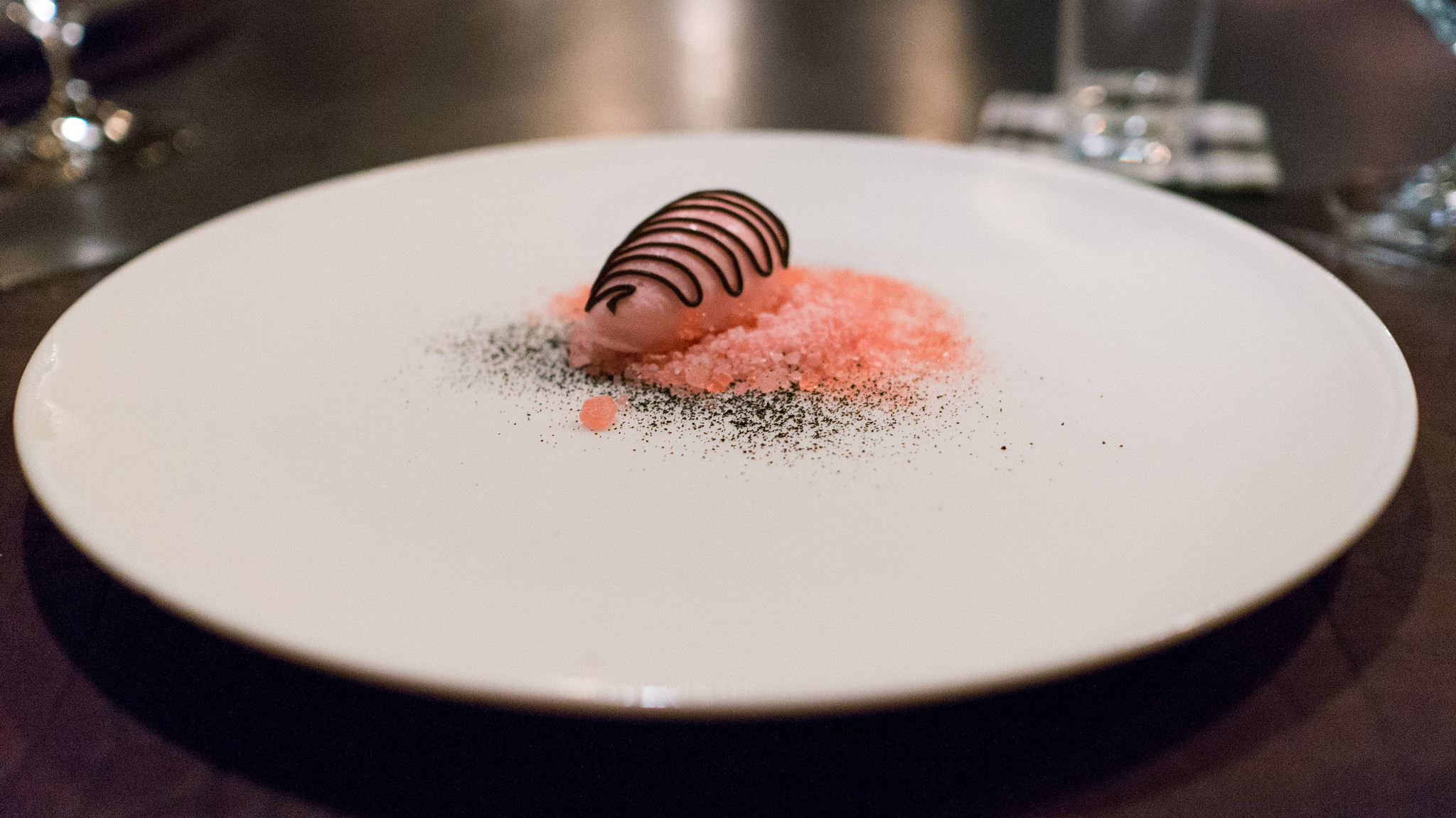

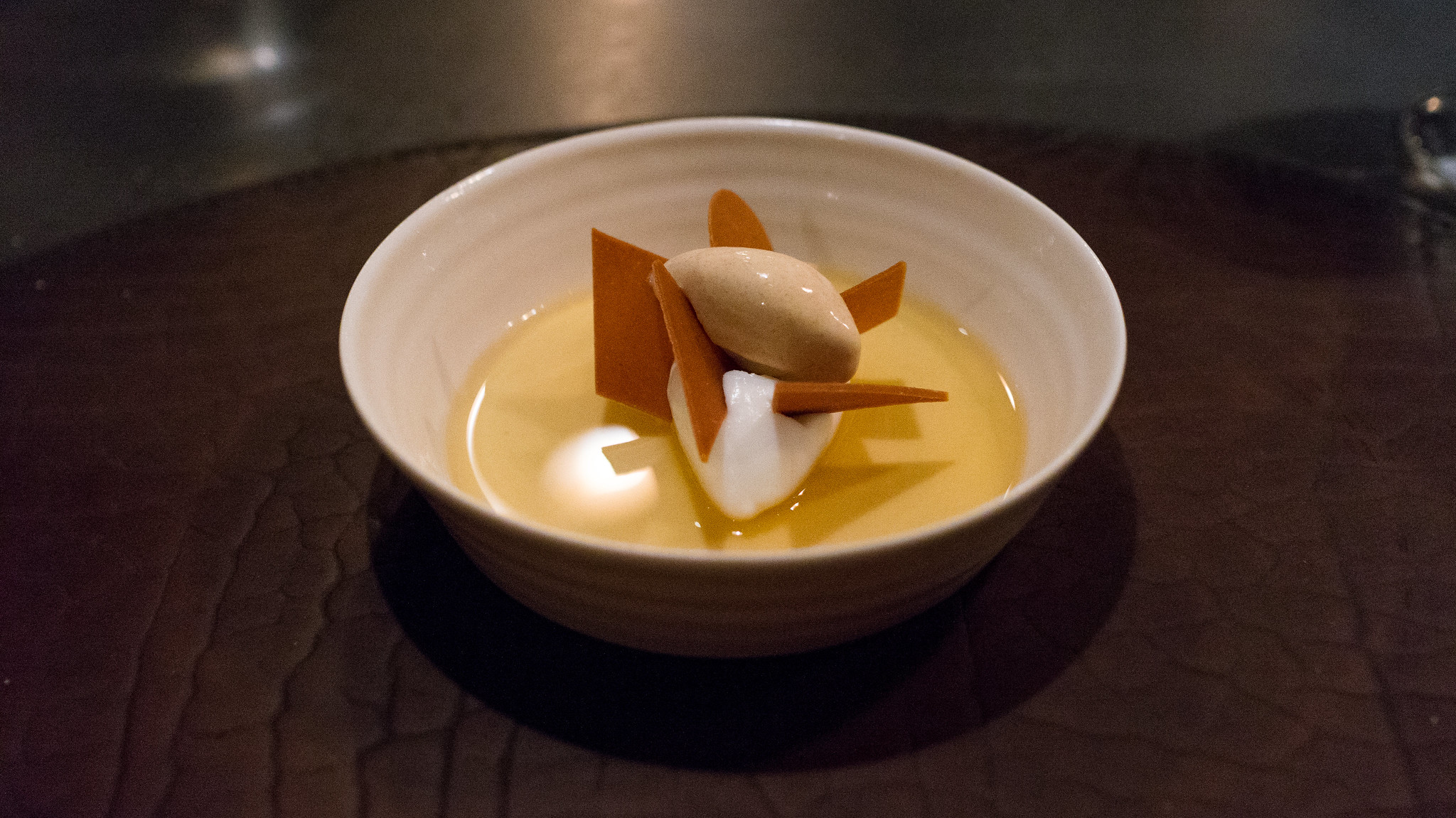
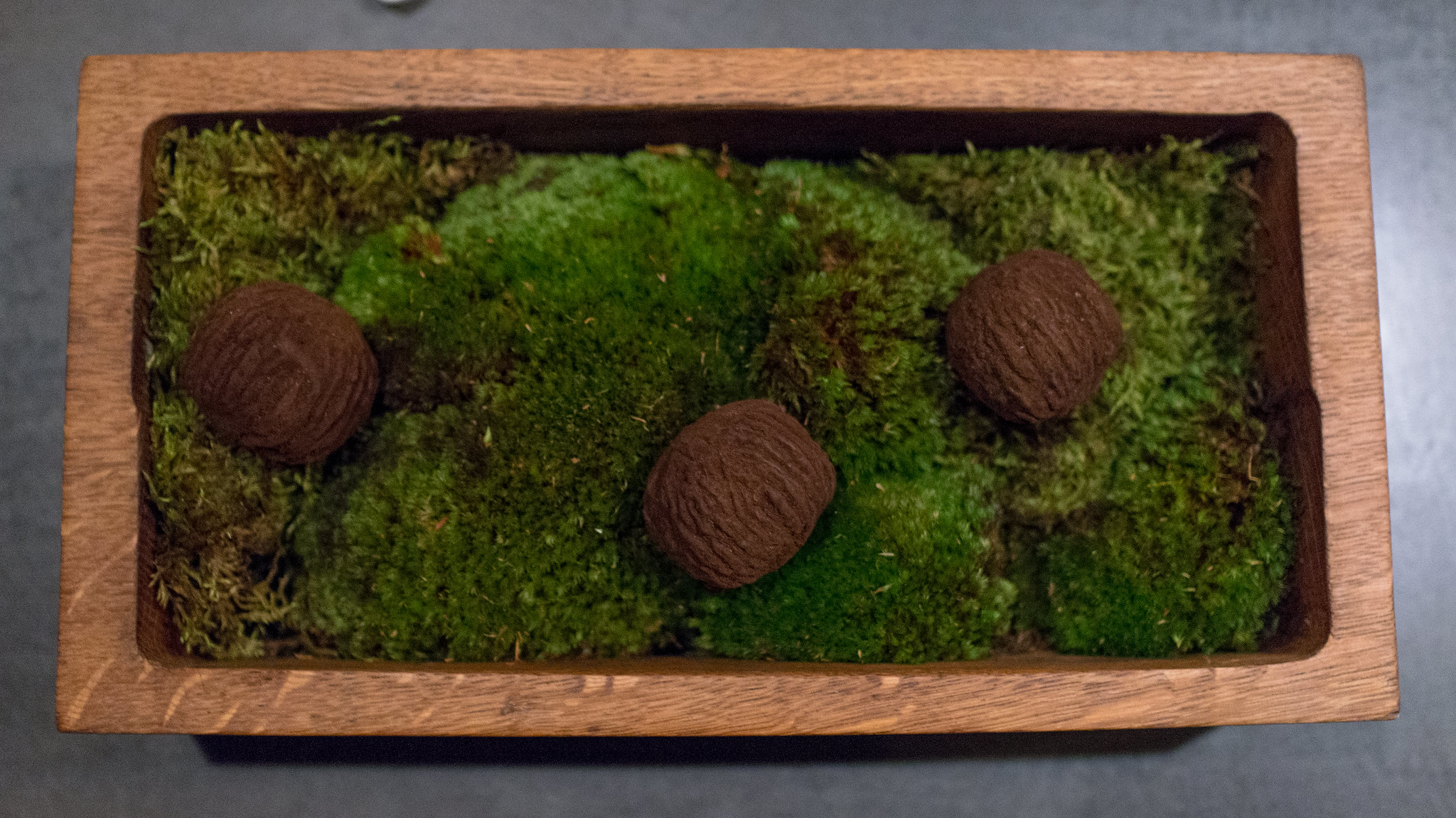



No comments:
Post a Comment